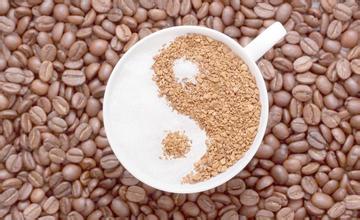The unique floral flavor of Panamanian coffee introduces the characteristics of fine coffee beans in the manor area.
Panama City was originally a fishing village of Indians. It is now divided into three parts: the ancient city, the old city and the new city. With a population of 830,000, Panama City is a famous city with a long history.
In 1513 AD, the navigator Barboa boarded the central continent of America from the Atlantic Ocean. When he was looking at the terrain on a mountain, he suddenly saw the Pacific Ocean in his glasses. He immediately realized that this place was of great geographical significance. He traveled all night to the Pacific Ocean, chose a fishing village as a foothold, built some houses one after another, and used the name of the local Indians to call this place "Panama", meaning "fishing village". This was Panama City's predecessor.
In 1519, the Spanish Dynasty sent Davila to serve as governor here. After he took office, he built a large number of buildings and expanded the fishing village into a town. Palaces, prisons, parks, shops and hospitals appeared one after another. Panama City was officially born. In the following years, Panama City became a base for Spanish colonists to enslave American Indians and a center for religious activities. It was also a distribution center for Spanish colonists to plunder wealth and sell slaves in America. Spanish colonists concentrated a large number of gold, silver and jewelry plundered from all directions in the city and then transferred them to Spain itself. Panama City's wealth naturally attracted pirates.
In 1671, the English pirate Morgan invaded Panama City by force, and after looting it, set fire to the entire city.
In 1673, Panama City was rebuilt about 8 km west of the ruins of the old city.
In 1903 it was designated as the capital of the Republic of Panama. Today, Panama City covers an area of more than 100 square kilometers and is the political, economic and cultural center of Panama.
There are many ways to wash the coffee beans, but most of them are to remove the floating beans after picking the coffee fruits, then remove the pulp, and then soak the coffee beans in the fermentation tank. The enzymes in the water will soften the mucus attached to the endocarp of the coffee beans, and the natural yeast will decompose the sugar in the mucus. This process is called fermentation. After fermentation is complete, the coffee beans are moved to the sun to dry. During the drying process, the coffee beans need to be continuously stirred to ensure drying uniformity. Finally, the shelled beans are stored in the warehouse. After the raw beans are placed, they are shelled and bagged. The coffee thus processed is clean in taste, emphasizing bright and lively fruit acids, as well as clear fruit and floral flavors.
Therefore, it can be imagined that the superiority of flower butterflies in varieties, coupled with fine processing methods, if medium and light baking is used to complete the final flavor trend of this bean. You can certainly give this flower butterfly a great affirmation with its unique floral, southern Asian fruit and berry flavors, as well as honey sweetness and smoothness, aroma and lingering finish.

Important Notice :
前街咖啡 FrontStreet Coffee has moved to new addredd:
FrontStreet Coffee Address: 315,Donghua East Road,GuangZhou
Tel:020 38364473
- Prev

Introduction to the characteristics of Kenya Jinchu Coffee Flavor Manor with strong Wumei flavor
High-quality Kenyan coffee is aromatic, full-bodied and fruity, with a rich and perfect taste. Kenyan coffee has a wonderful fruit flavor, tastes like BlackBerry and grapefruit, and is a favorite of many coffee gluttons. This coffee has an excellent medium purity, crisp and refreshing taste. It has a fresh flavor and is most suitable for drinking iced coffee in summer. When tasting this coffee
- Next

Indonesia Mantenin Fine Coffee Bean Flavor Taste Manor Features Production Area Variety Introduction
Known as mandheling, mandheling is found all over lake Toba in northern Sumatra. The finished product has unique fragrance of herbs and trees. More than ten years ago, the Japanese adopted stricter quality control. After four manual bean picking and eliminating defective beans, they produced dark green and uniform golden mantinin, creating another wave of market demand. Even Europe and America were crazy about it.
Related
- Detailed explanation of Jadeite planting Land in Panamanian Jadeite Manor introduction to the grading system of Jadeite competitive bidding, Red bid, Green bid and Rose Summer
- Story of Coffee planting in Brenka region of Costa Rica Stonehenge Manor anaerobic heavy honey treatment of flavor mouth
- What's on the barrel of Blue Mountain Coffee beans?
- Can American coffee also pull flowers? How to use hot American style to pull out a good-looking pattern?
- Can you make a cold extract with coffee beans? What is the right proportion for cold-extracted coffee formula?
- Indonesian PWN Gold Mandrine Coffee Origin Features Flavor How to Chong? Mandolin coffee is American.
- A brief introduction to the flavor characteristics of Brazilian yellow bourbon coffee beans
- What is the effect of different water quality on the flavor of cold-extracted coffee? What kind of water is best for brewing coffee?
- Why do you think of Rose Summer whenever you mention Panamanian coffee?
- Introduction to the characteristics of authentic blue mountain coffee bean producing areas? What is the CIB Coffee Authority in Jamaica?

